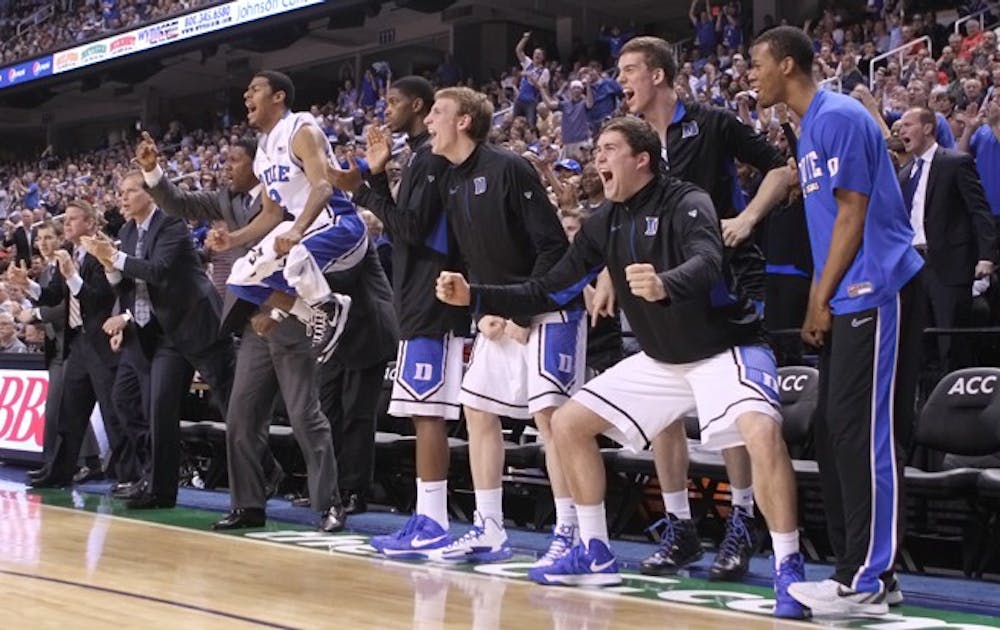Duke’s substitution patterns have been in flux for much of the year, as head coach Mike Krzyzewski worked to cover for Ryan Kelly’s injury and Rasheed Sulaimon’s up-and-down freshman campaign. Despite all the changes, he was back to playing a six-man rotation in Duke’s ACC Tournament loss to Maryland, with the seventh and eighth players—Josh Hairston and Alex Murphy—seeing a combined 10 minutes of action.
In fact, Duke ranks 311th out of 347 Division I teams in bench minutes even through all the lineup changes, with only 24 percent of the team’s minutes being soaked up by reserves. So can the Blue Devils make it through a grueling March schedule even without having the depth of its competition?
Since the 2006-07 season, Duke’s bench has played between 28.8 percent and 31.8 percent of the team’s minutes, which rank them mid-pack in Division I. The two exceptions to this pattern present a contrasting set of outcomes for this year’s Blue Devils to worry about.
Get even more coverage of Duke basketball in the 2013 NCAA Tournament
The last time Duke relied so heavily on its starters was the 2010 National Championship season, when Jon Scheyer, Kyle Singler and Nolan Smith were the workhorses on a team that got just 23.4 percent of its minutes from the bench.
Prior to that, in 2006-07, a talent-starved roster relied heavily on Josh McRoberts, Scheyer, Greg Paulus and DeMarcus Nelson en route to just 22.8 percent of minutes played by the bench. That Duke team lost in the NCAA Tournament’s first round.
Among the past five national champions, one has followed Duke’s lead by counting on the starters—John Calipari’s Kentucky team last season, which ranked 323rd out of 347. North Carolina in 2009 and Florida in 2007 took a more moderate road, and the 2010 Connecticut and 2008 Kansas teams were very liberal with playing time, getting close to 30 percent of their minutes from the bench.
If there’s a conclusion, it’s that talent can trump depth in some cases, but Duke will certainly have to overcome teams with more aggressive substitution patterns if they are to advance deep into this year’s Tournament.
Get The Chronicle straight to your inbox
Signup for our weekly newsletter. Cancel at any time.

